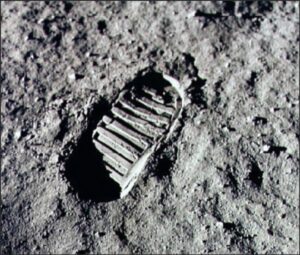
Astronaut Neil Armstrong made history when he left the first dusty footprint on the Moon. The Moon landing was one of humanity’s greatest technological achievements but the marker remains unprotected by international law, writes Mercury News.
“Once you blow away the footprint, that’s gone,” said space archeologist Beth O’Leary of New Mexico State University, who is among a growing chorus of experts pleading for formal protection of historic lunar sites and artifacts.
“We need to say: ‘Don’t touch. You can’t go there. Period,’ ” said Sacramento-based Wayne Donaldson of the California Preservation Foundation.
Other historic mementoes include six U.S. flags, rigged with wire so they look like they’re saving in the breeze, as well as stainless steel commemorative plaques about the size of dinner plates. China and Russia also have implanted markets on the Moon. There are two golf balls hit by Apollo 14’s Alan Shepard, a Bible left on a dashboard of ab abandoned buggy… and bags of human waste — an estimated 400,000 pounds of stuff in all.
Writes Mercury News:
There are some modest but important protections already in place. In December, the “One Small Step to Protect Human Heritage in Space Act” became law, requiring any company that works on lunar missions with the National Aeronautics and Space Administration to agree to be bound by guidelines intended to protect American landing sites on the moon. And an international accord signed by 17 countries in 2020 would offer protection, but major powers China, Russia and India have not signed it.
But those protocols apply only to companies that do business with NASA.
The “Artemis Accords,” drafted by NASA in 2020 and signed by 17 nations, is the first international agreement to include the concept of cultural heritage in outer space. It offers a framework, based on the Outer Space Treaty of 1967, for peaceful and transparent space exploration — and references, in a general way, “due regard” for the places we’ve been and the objects we left behind.
